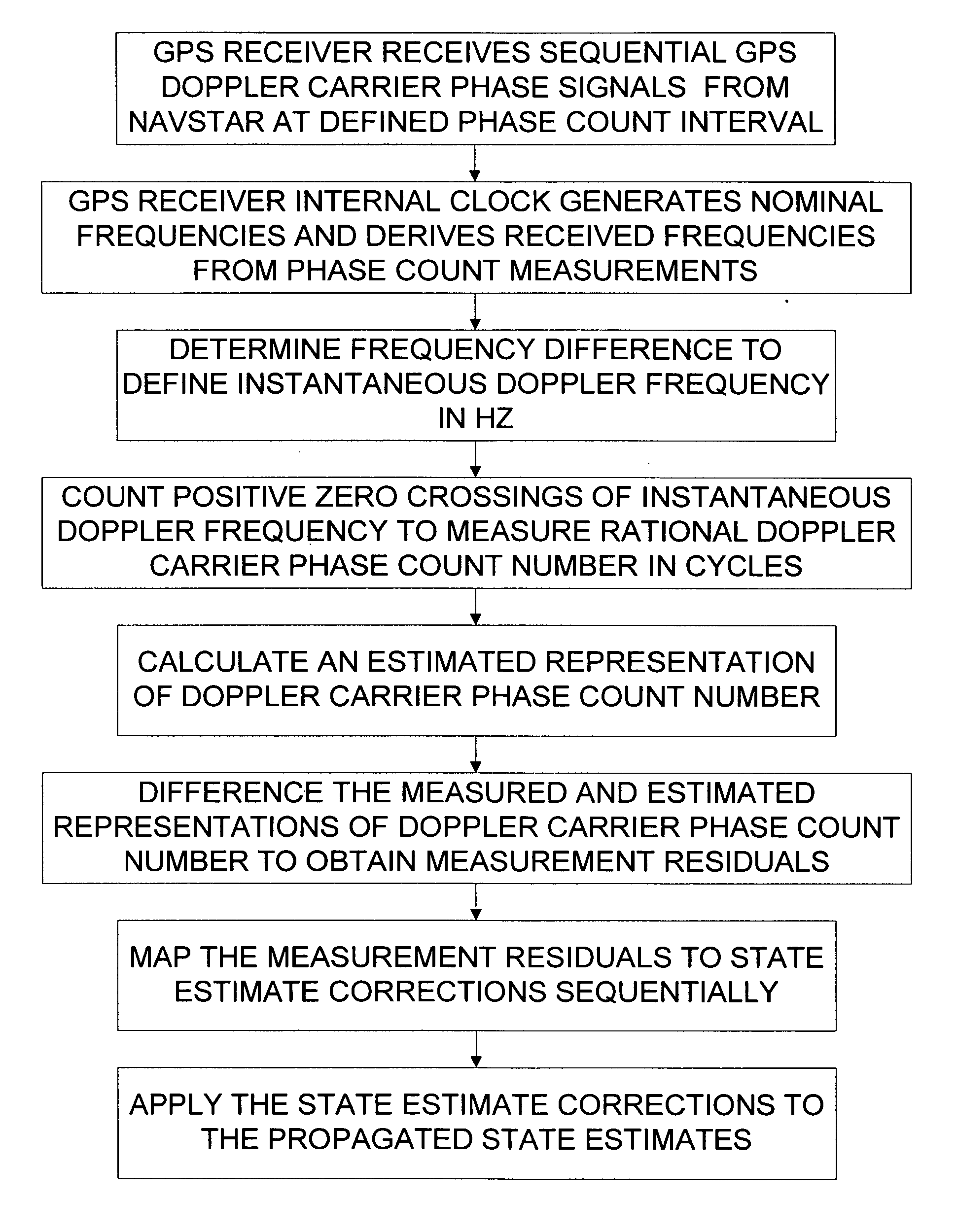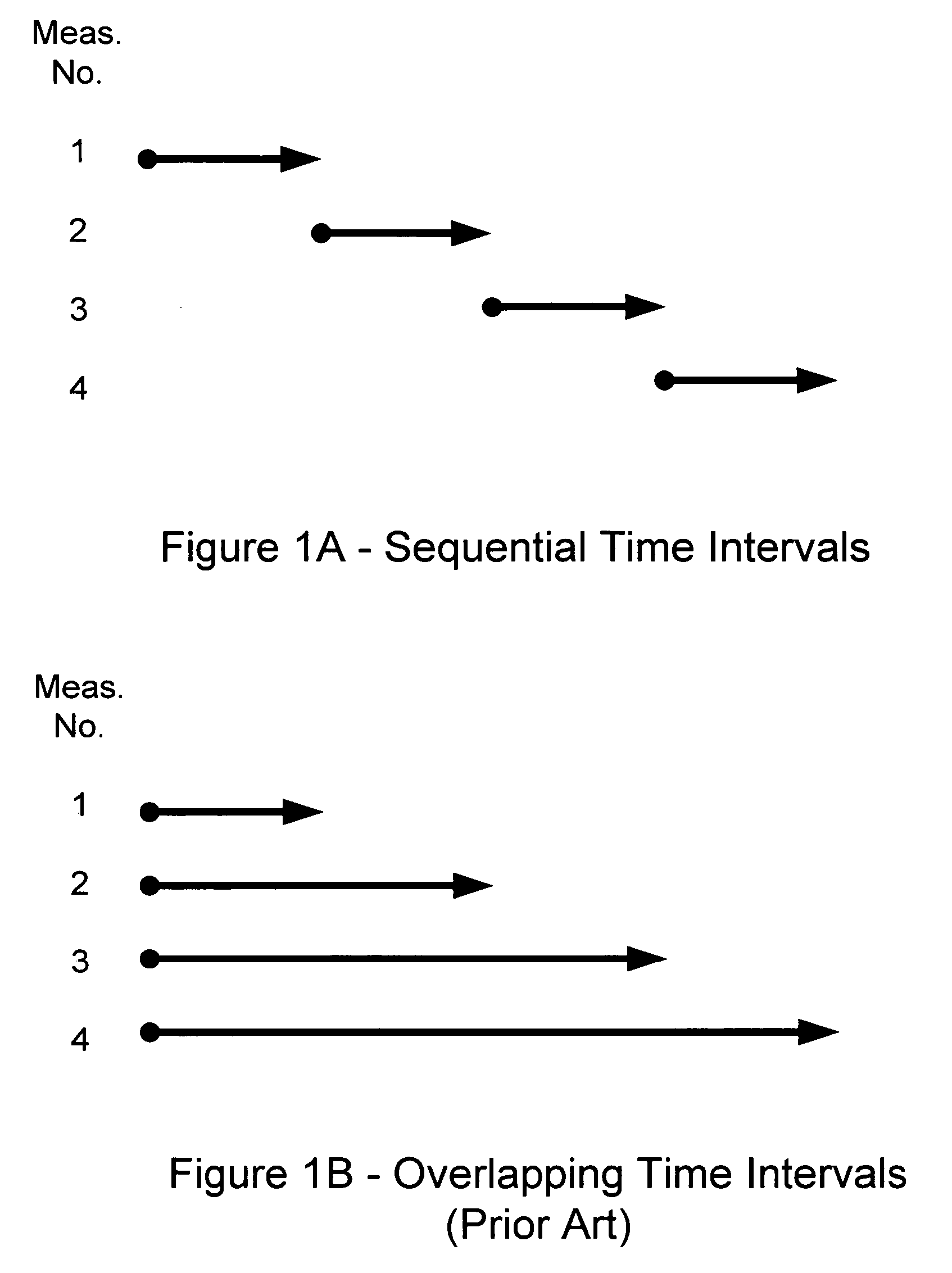GPS carrier phase measurement representation and method of use
a carrier phase and measurement representation technology, applied in the field of gps carrier phase measurement representation and method of use, can solve the problems of significant detrimental impact on orbit determination and geophysics, significant unrealistic, and serious problems, and achieve the effect of reducing the throughput time, and reducing the frequency of carrier signals
- Summary
- Abstract
- Description
- Claims
- Application Information
AI Technical Summary
Benefits of technology
Problems solved by technology
Method used
Image
Examples
Embodiment Construction
[0073] One Embodiment of the Present Invention
[0074] Sequential Doppler Phase Count Measurement Representations
[0075] The transmitter on each GPS spacecraft (NAVSTAR) emits radio carrier signals at two L-BAND frequencies fnNV (NV indicates NAVSTAR and n is an integer denoting frequency, either 1 or 2). A USER spacecraft with GPS receiver detects radio carrier signals that are Doppler shifted with multiplicative Doppler shift βij, and are contaminated by random additive ionospheric effects δfnION. Thus the USER spacecraft receives radio carrier signals with frequency βijfnNV+δfnION. The USER receiver knows the nominal transmitted frequency fnNV and (using its own clock) approximates the received radio carrier signal with frequency fnU. A frequency difference is represented by the USER receiver to define (i.e., the subtraction order is defined by each actual receiver, and so our representation here may need a sign change for some receivers) the instantaneous Doppler frequency fnD:
f...
PUM
 Login to View More
Login to View More Abstract
Description
Claims
Application Information
 Login to View More
Login to View More - Generate Ideas
- Intellectual Property
- Life Sciences
- Materials
- Tech Scout
- Unparalleled Data Quality
- Higher Quality Content
- 60% Fewer Hallucinations
Browse by: Latest US Patents, China's latest patents, Technical Efficacy Thesaurus, Application Domain, Technology Topic, Popular Technical Reports.
© 2025 PatSnap. All rights reserved.Legal|Privacy policy|Modern Slavery Act Transparency Statement|Sitemap|About US| Contact US: help@patsnap.com



